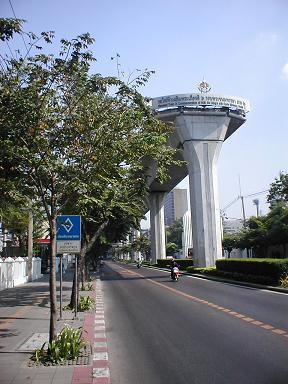Rain rain rain. Vietnam is meterologically mysterious. All the books say that when you pass through the strip of mountains just north of Dangang, the weather changes, and becomes pretty awful. I couldn’t quite believe them. Yesterday morning I was in tropical winter, beautiful, hot dry climate, giving you the feeling of no care in the world. Today I toured the ancient city of Hue in the rain. This is the same latitude as Yangon (Rangoon, in Myanmar), which instead is hot and tropical. So from now on it’s cold and wet, a good job spring is coming on, although there isn’t really such a thing as spring until a lot further north.
This morning I had an amusing introduction to the Vietnamese gay scene. There’s a fantastic imperial palace in the middle of Hue, built in the 19th century by the Nguyen dynasty. It’s a huge set of nested fortresses very much Chinese in style. Absolutely daunting that such things are built, how much power can accumulate. While walking round I imagined it being active, which it was until 1945. There are other places in the world which are living now, and perhaps in a shorter time than we think will be tromped through by tourists – perhaps the Vatican, the Whitehouse.
Anyway, it was raining, so I was hanging out to dry in one of the buildings for a while. A man minding a shop starts talking to me, and asks the usual introductory questions. “Where are you from?” “Are you married?” “Do you have a girlfriend?” This is quite clever, as everyone asks me if I’m married, it just seems to be the culturally accepted question to ask a man unaccompanied by a wife.
When I say no, he suddenly says “I have a boyfriend, in Germany”. I assume that he doesn’t quite understand that “boyfriend” isn’t just a friend who happens to be male, but as he tells me more it dawns that he really does mean boyfriend. This German is coming to visit in the summer for a month, and they are going to tour Vietnam together; by this point I’m pretty sure they won’t just hold hands.
So I ask him how they met. Here, in the picture shop! The German came with another male friend, and at first our Vietnamese shopkeeper thought that they were partners. Somehow it became clear that this wasn’t the case, and the German asked him if he likes boys. Then one led to two, and afterwards they swapped email addresses, so this year they can have another rendezvous.
By this point I was curious to learn more about the local gay scene, so I ask him if he has boyfriends here. No no! Not at all, he only has foreign boyfriends, as they are easier to keep secret. There was evidently some stigma with being openly gay, although he said that some people were nevertheless. No, instead, he says, he has Vietnamese girlfriends!
It was quite clear that there was an offer to me going on, so I made it explicitly clear that I prefered girls. He went so far as to say (in hushed tones, going quiet as another two tourists passed by), that some people who haven’t had boys before like to try it out anyway, even if they’re not sure. And, he said, that if it didn’t work, or they didn’t like it, that would be no problem.
At this point I decided to make what he perceived as a hasty exit – “You can just stay and talk if you like, I’m not forcing anything on you!” – not because I felt at all uncomfortable about the situation, but to quickly run a hundred yards and burst into laughter.
So if you’re in Hue, and gay, I can tell you the place to go!
